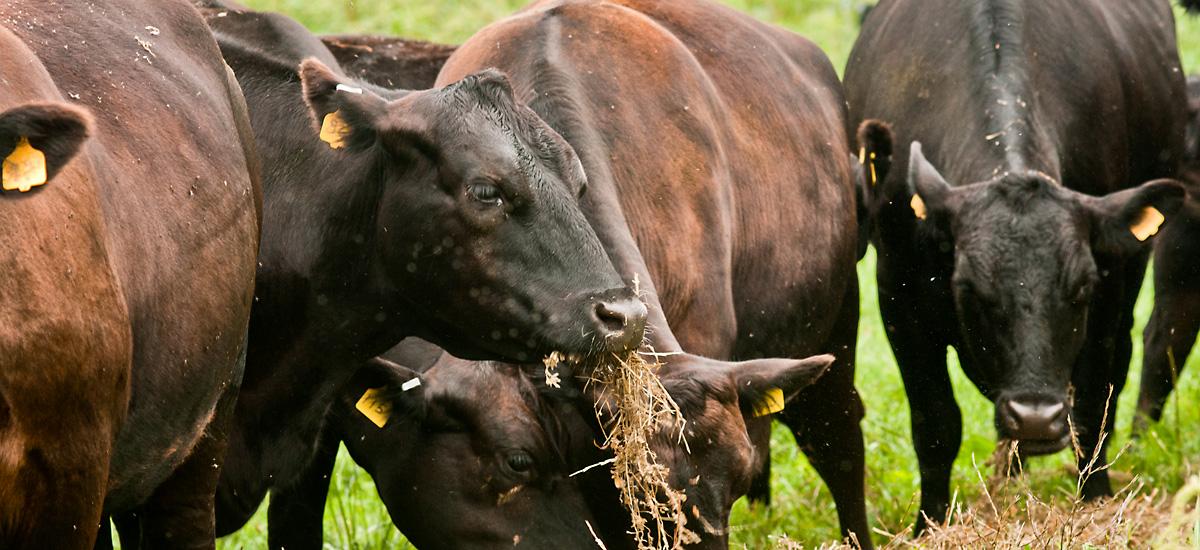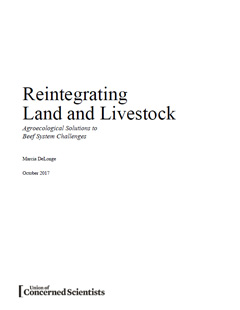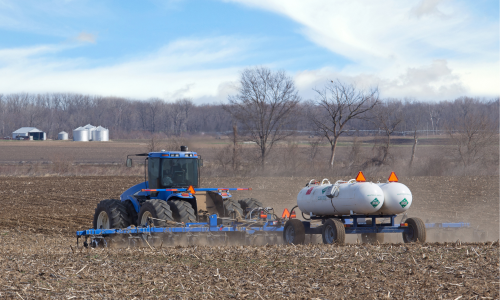Beef often comes with a high price tag, and not just at the cash register. While beef production systems are complicated, our beef habit, overall, has contributed to damaging our climate, water, air, and soil, as well as to diet-related diseases for many Americans. Because of these and other issues, an increasing number of experts have recommended reducing beef consumption to improve our health and environment.
But eating less beef isn't the only way to mitigate the negative impacts. Looking more closely at beef production can help us identify additional solutions—ones that start with the soil, support farmers, and yield benefits for all.

Reintegrating Land and Livestock focuses on one part of the beef production system: the vast acres of crops, predominantly corn, that provide cheap and reliable cattle feed, but which are produced in a way that degrades soil and water, requires heavy application of fertilizers, and endangers the long-term viability of many farms. Our analysis shows that it is possible to profitably transform this underlying industrial crop system that is so tightly intertwined with US beef production while minimizing harmful environmental impacts. This transformation can start with converting small portions of today’s farms to more diverse farming systems that integrate livestock as well as regenerative crop and grazing practices.
We found that farmers who want to introduce livestock and diversify their crops can do so profitably in many instances. In our analysis, conversions that involved as little as one-third of a 1000-acre farm led to an increase in farmers’ profits under all scenarios except one (a relatively extreme reference case), with increased profits in the other scenarios ranging from $11 to $298 per acre. The study found that there could be significant environmental benefits per acre as well, including increased soil carbon, reduced on-farm emissions from fertilizers, and reduced water footprints.
By adopting integrated systems, farmers can increase soil health, reduce their water use and water pollution, and maintain or increase their profits. Currently, these systems would likely produce less beef per acre—so that scaling them up may reduce total beef production, or require more land. But additional investments in research and technical support for regenerative practices would very likely continue to improve their outcomes. Coupled with efforts to reduce many Americans’ red meat consumption in alignment with science-based nutrition guidelines, these production systems could help the nation achieve a healthy and sustainable balance. The report offers policy recommendations to help support farmers and researchers take steps towards this future.




